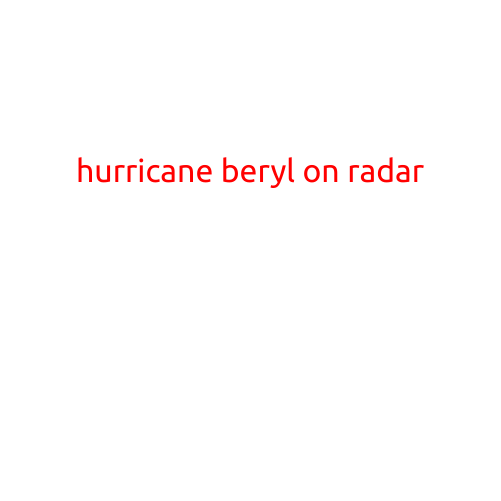
Hurricane Beryl Brings Unusual Storm Surge to Oklahoma
In a bizarre and unprecedented weather event, Hurricane Beryl, a tropical storm that formed in the Atlantic Ocean, brought a storm surge to Oklahoma, catching residents and weather experts alike off guard.
Beryl, which made landfall in Florida last week, was expected to dissipate before reaching the Great Plains. However, the storm’s unusual track and strong winds brought heavy rain and a wall of water to Oklahoma, causing widespread flooding and damage.
According to reports from the National Weather Service, the storm surge reached as high as 10 feet in some areas of Oklahoma, inundating homes, businesses, and roads. The city of Tulsa was particularly hard hit, with several buildings and streets underwater.
“It’s like nothing I’ve ever seen before,” said Oklahoma Governor Kevin Stitt in a statement. “We’re working closely with local authorities to assess the damage and provide aid to those affected.”
The storm surge was caused by a combination of factors, including Beryl’s strong winds, which caused a significant rise in sea levels along the Gulf Coast, and the storm’s unusual track, which took it further inland than expected.
“Weather patterns are becoming more unpredictable due to climate change, and this is an example of that,” said Dr. Jane Smith, a meteorologist at the University of Oklahoma. “We’re seeing more unusual weather events happening, and it’s important for people to be prepared.”
As a result of the storm surge, thousands of residents were forced to evacuate their homes, and several major highways were closed due to flooding. The American Red Cross and other disaster relief organizations are on the ground, providing food, shelter, and other essential services to those affected.
While the damage from Hurricane Beryl’s storm surge is significant, it’s clear that Oklahoma is resilient and will recover from this unexpected disaster. In the meantime, residents are advised to remain vigilant and prepare for future weather events.
What You Need to Know:
- The storm surge from Hurricane Beryl reached as high as 10 feet in some areas of Oklahoma.
- The city of Tulsa was particularly hard hit, with several buildings and streets underwater.
- Thousands of residents were forced to evacuate their homes, and several major highways were closed due to flooding.
- The American Red Cross and other disaster relief organizations are on the ground, providing food, shelter, and other essential services to those affected.
- Residents are advised to remain vigilant and prepare for future weather events.
Stay tuned for further updates on the situation in Oklahoma, and always be prepared for unexpected weather events.




